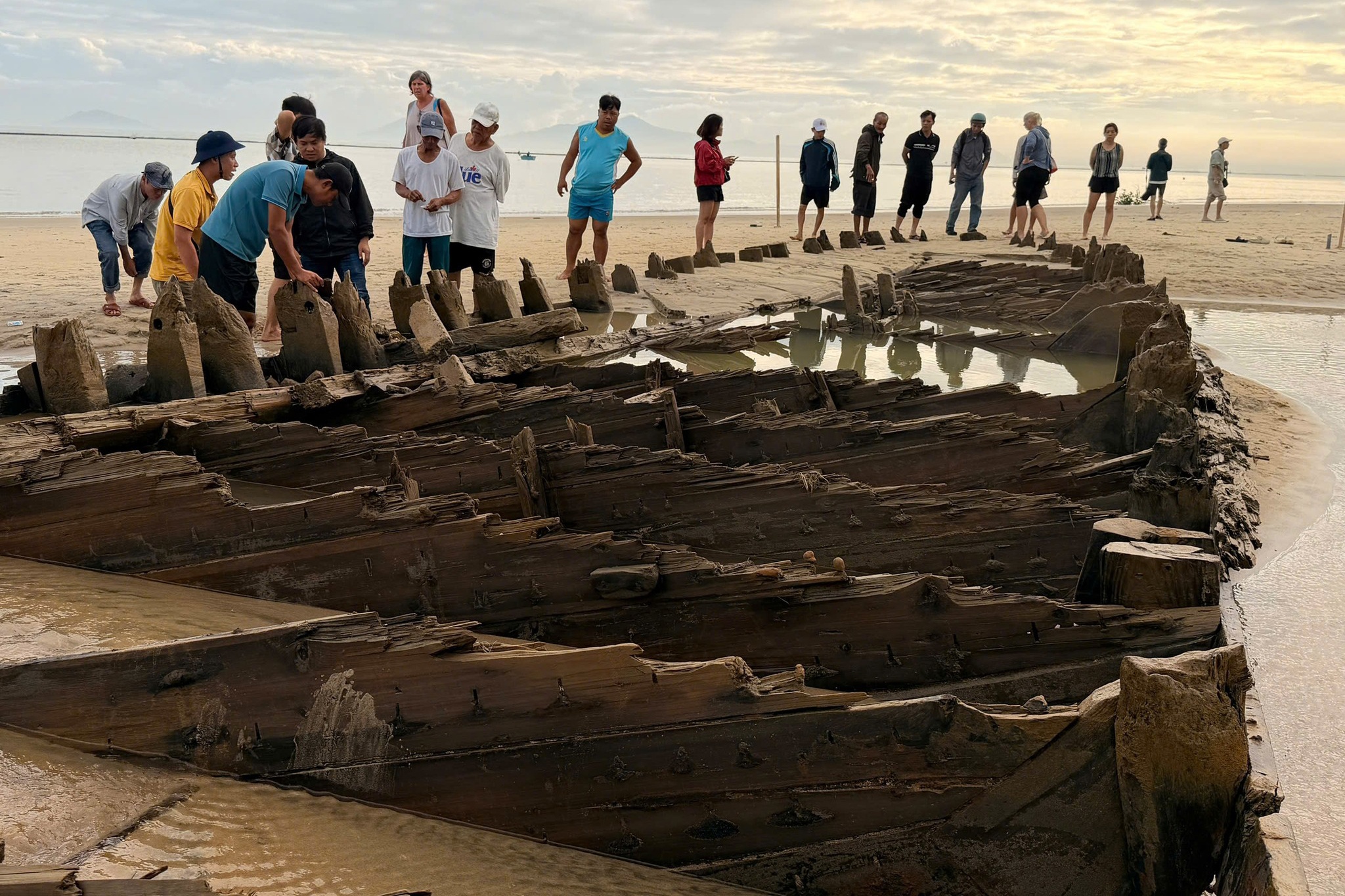 |
Talking to Tri Thuc - Znews , Mr. Le Quoc Viet, Chairman of the Quang Destination Club, said that after storm No. 13 (Kalmaegi), strong waves continuously eroded the coast, washing away the sand layer covering the Thinh My coast (Hoi An Tay ward, Da Nang ). On the morning of November 8, the body of the ancient ship called Cam An was clearly visible at low tide. Photo: NVCC. |
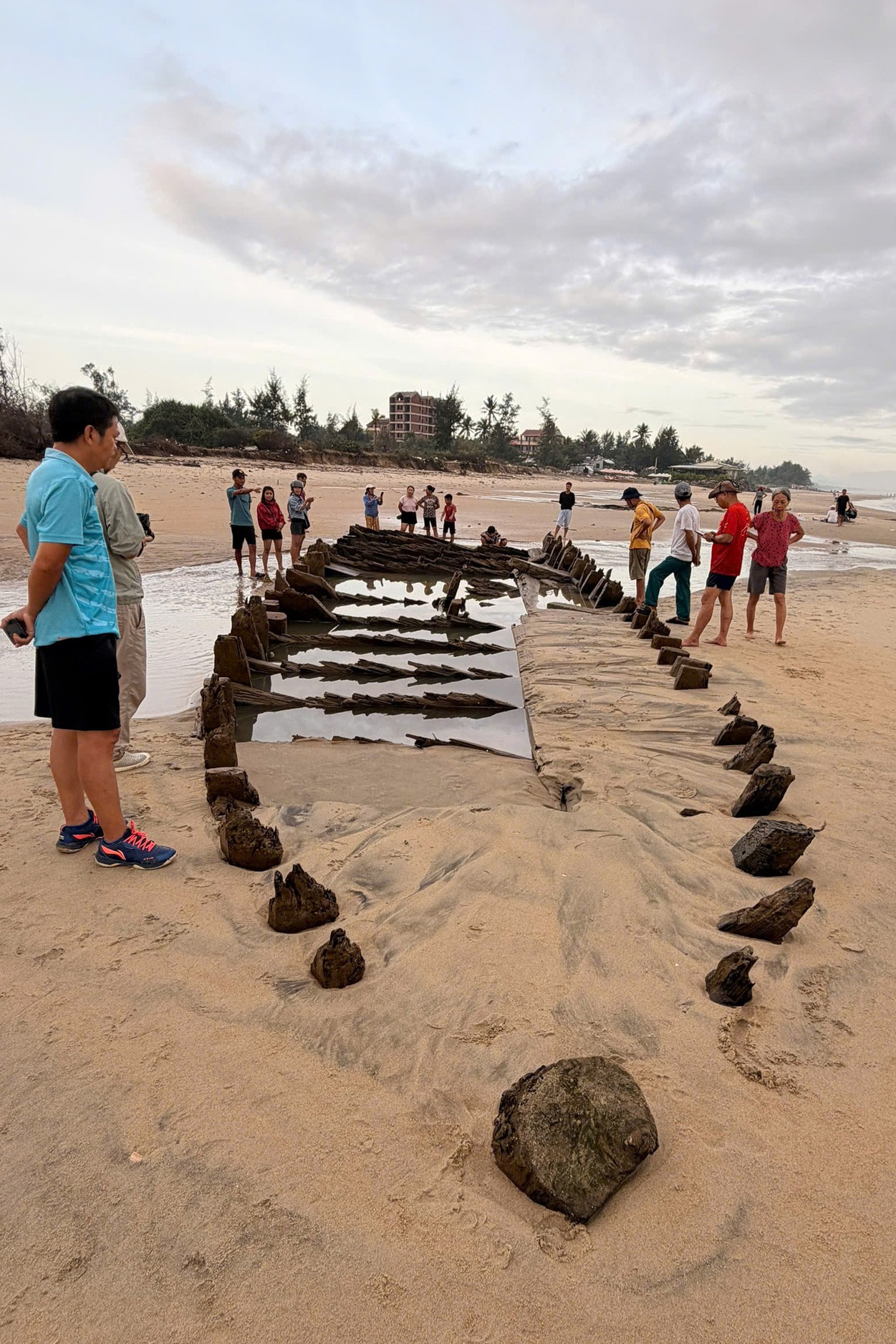  |
The wreck was first discovered in December 2023, initially revealing only a few wooden sections. According to Mr. Viet, initial assessments showed that the ship dates back to around the 14th-16th century. The ship is about 17.8 m long; the widest part of the hull is 4.84 m; has 17 compartments, a wide and round hull like a Chinese "junk" ship. This is a typical structure that helps increase stability when carrying goods and prevents sinking if 1-2 compartments are punctured. Photo: NVCC. |
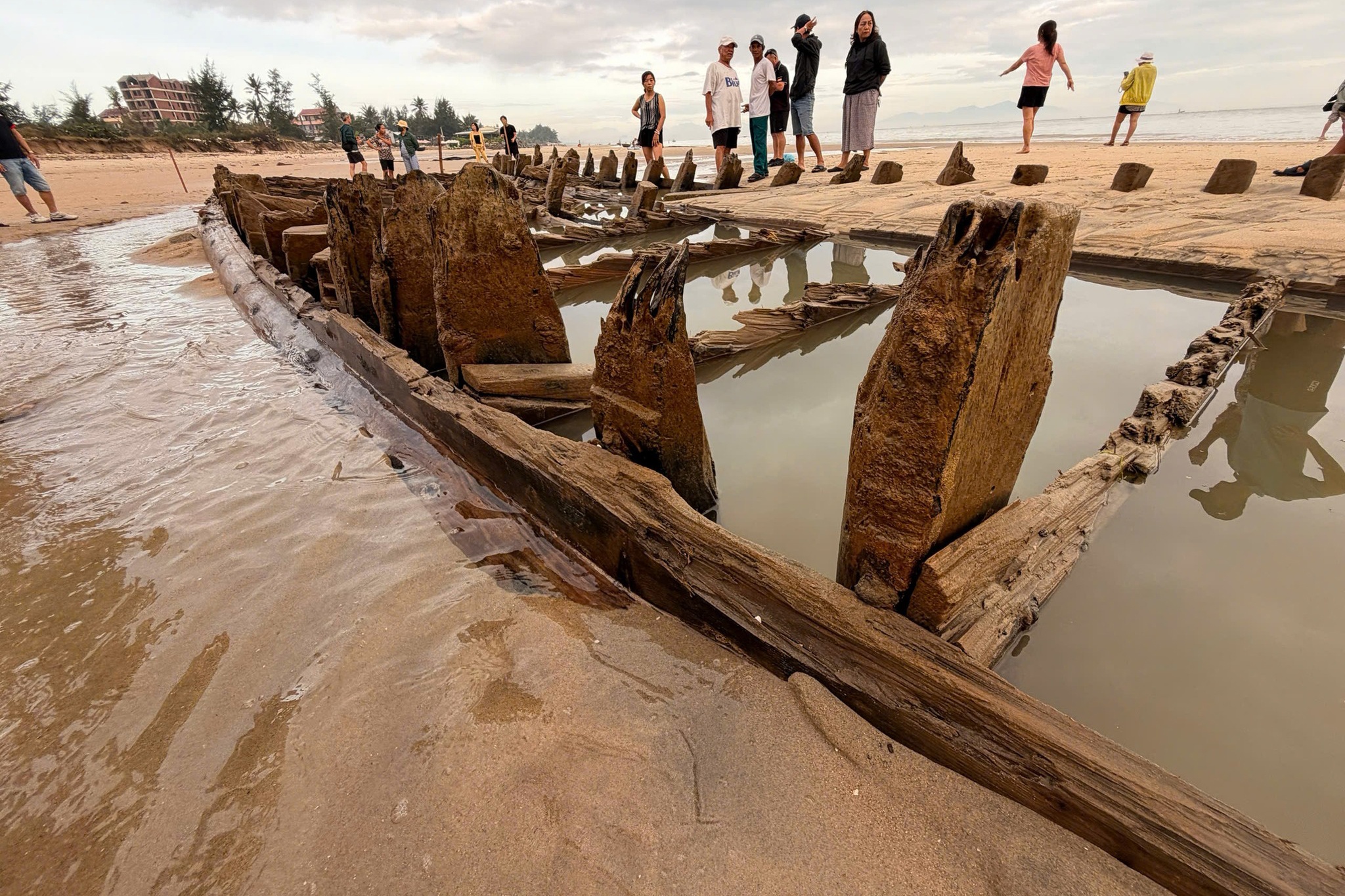 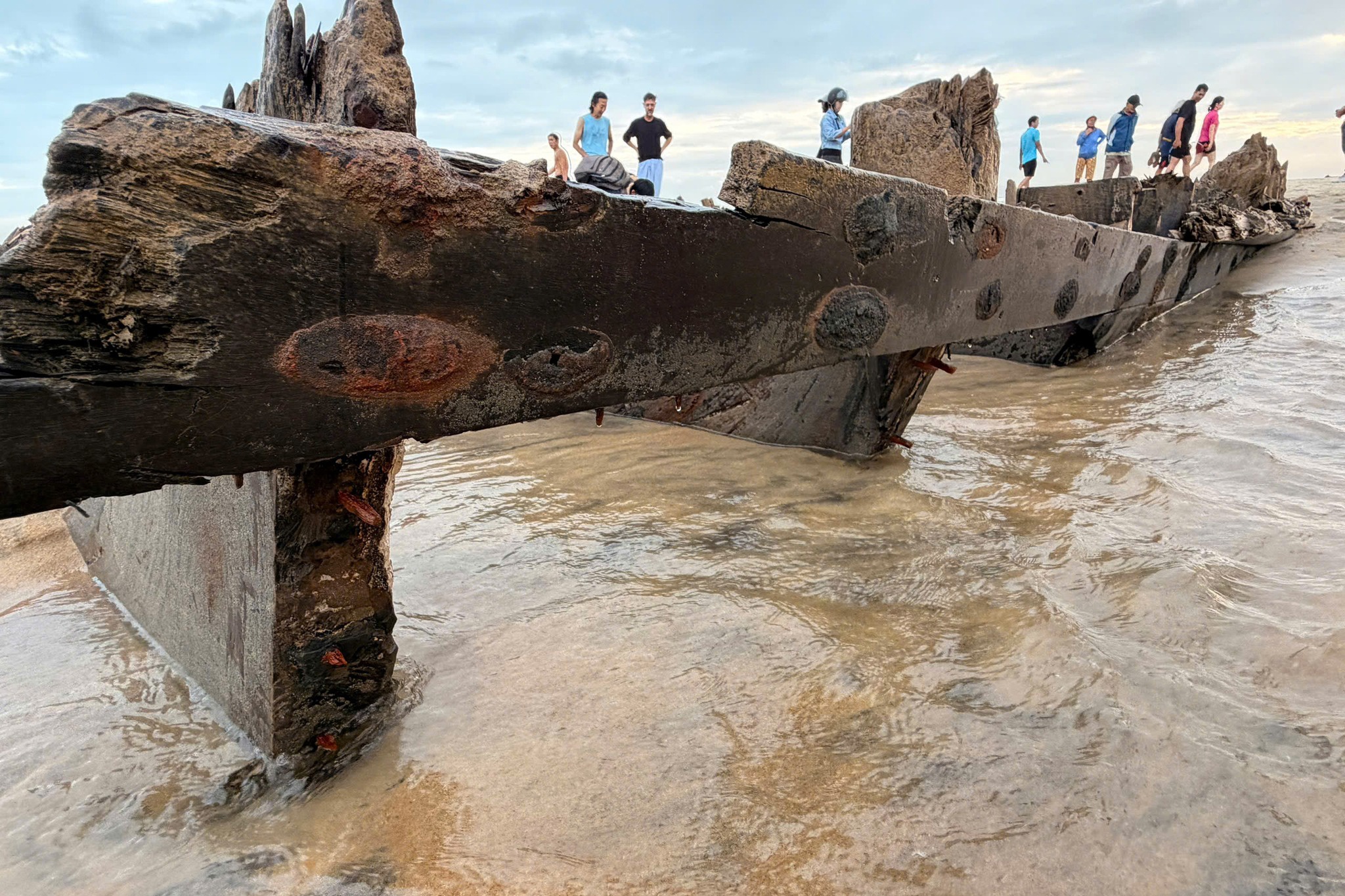 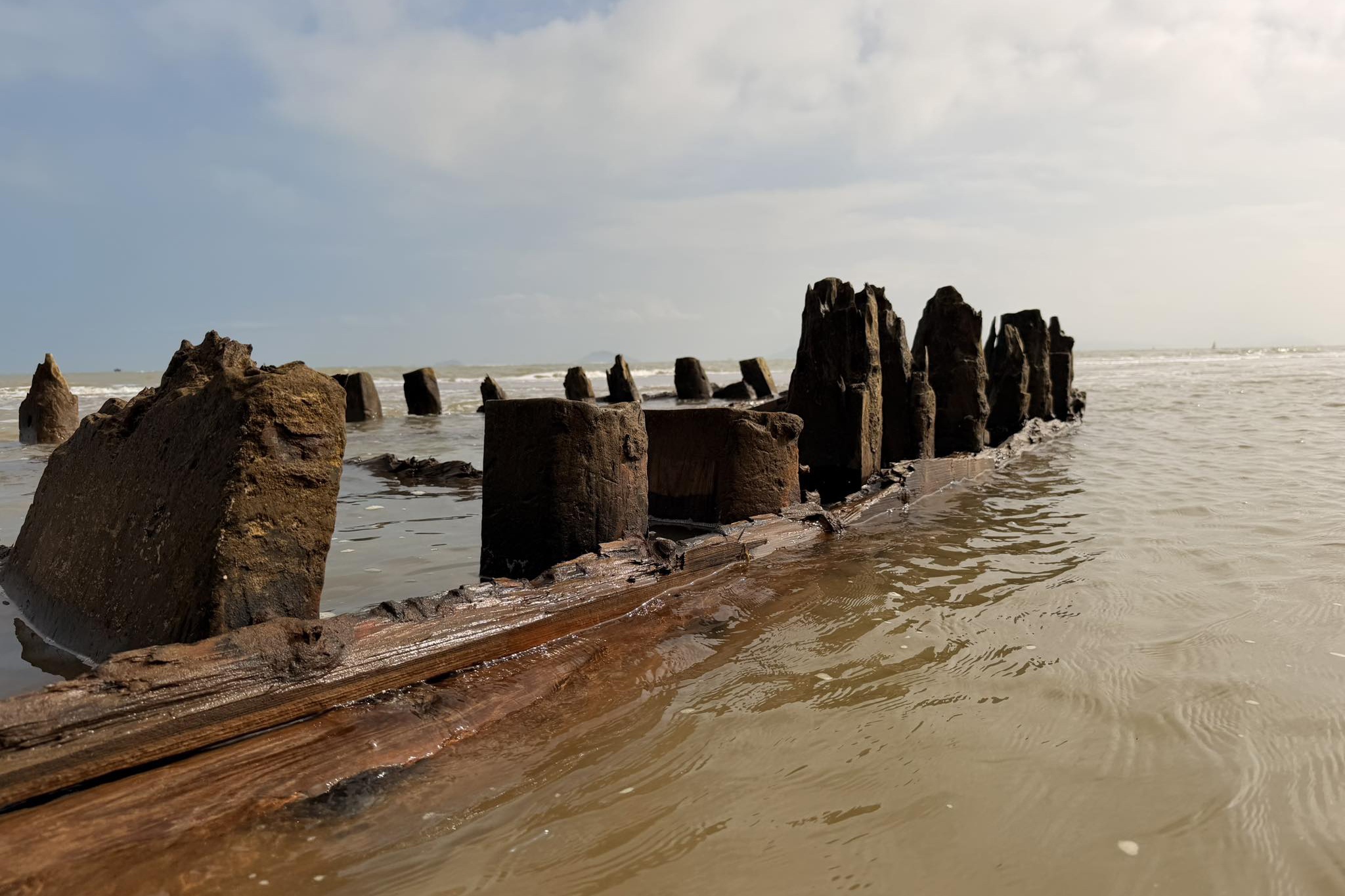 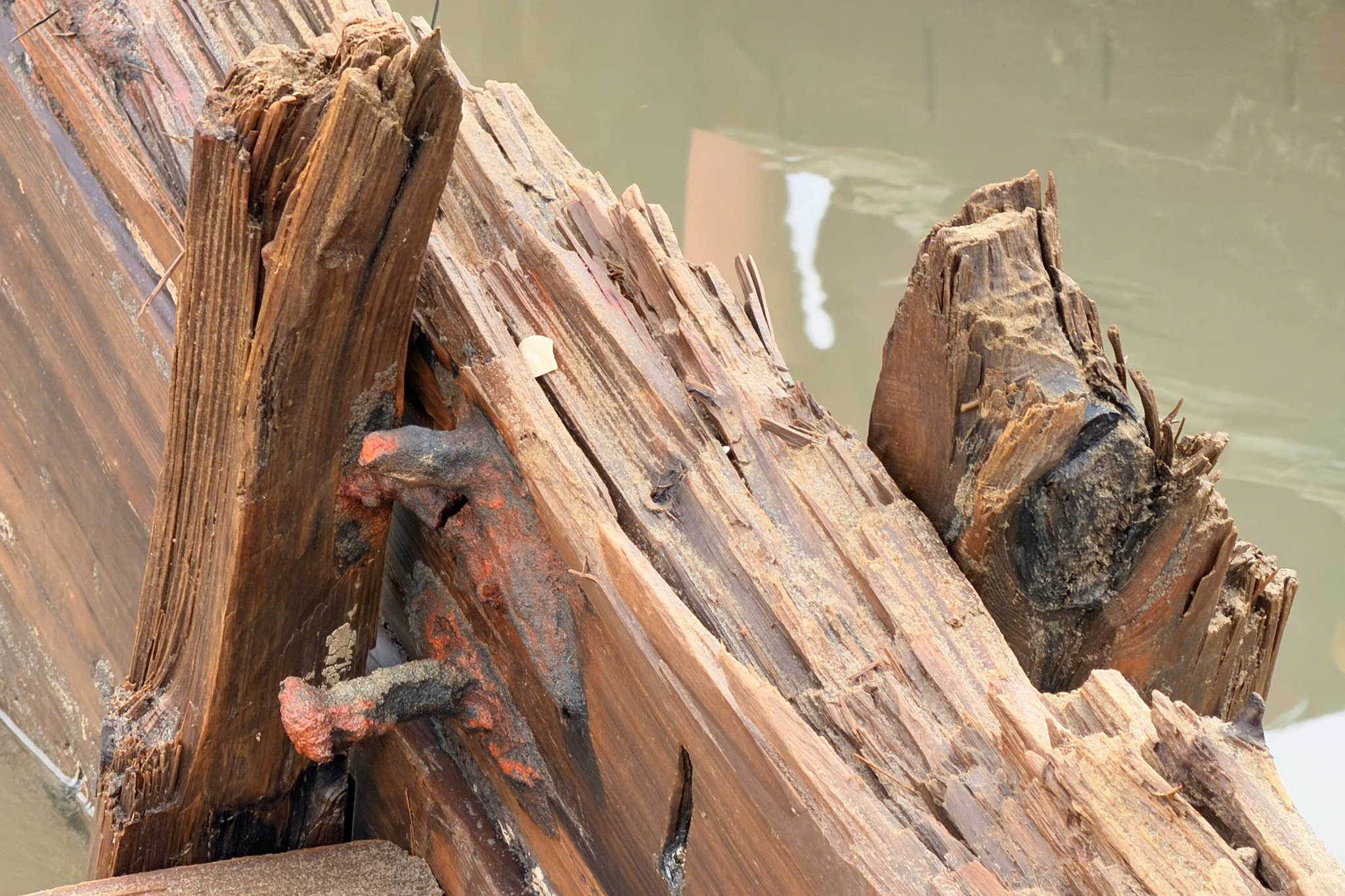 |
According to a report by the Hoi An World Heritage Conservation Center, the ship was built with three types of wood: kien kien, xang le (Lago ash) and temperate pine. The ribs were thick, joined with wooden joints and reinforced with wrought iron nails at a 45-degree angle, a technique popular in Vietnam and China in the 16th-18th centuries. Photo: NVCC. |
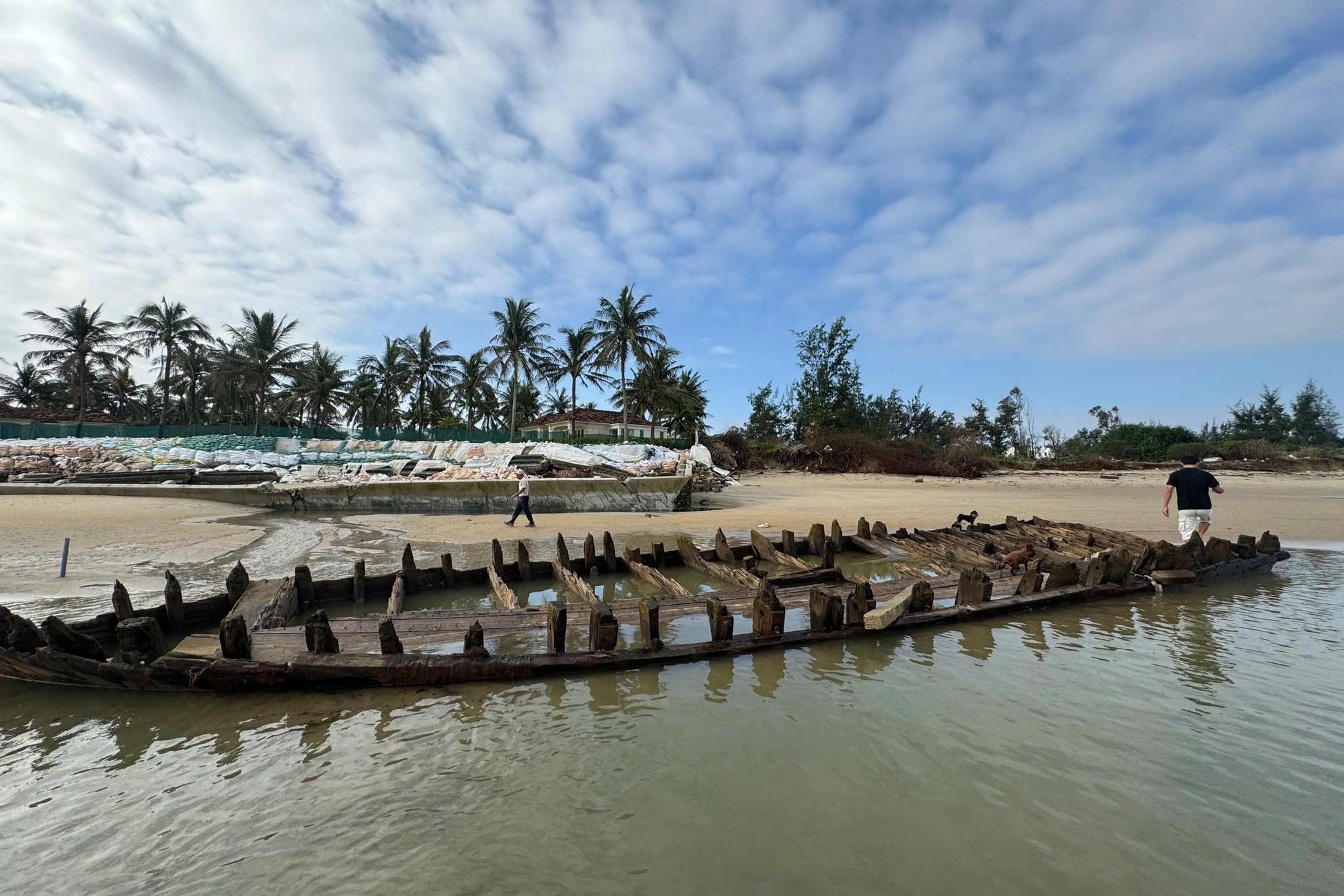 |
In terms of shape, the hull and bow are curved, the bottom is uneven, suitable for ships sailing far out to sea. This shows that this is most likely not a local fishing boat but a medium-sized transport or commercial ship, using offshore wave-resistant shipbuilding techniques. Some researchers have also hypothesized that it could be a Japanese warship of the Sekibune type, but there is currently not enough evidence to confirm. Photo: NVCC. |
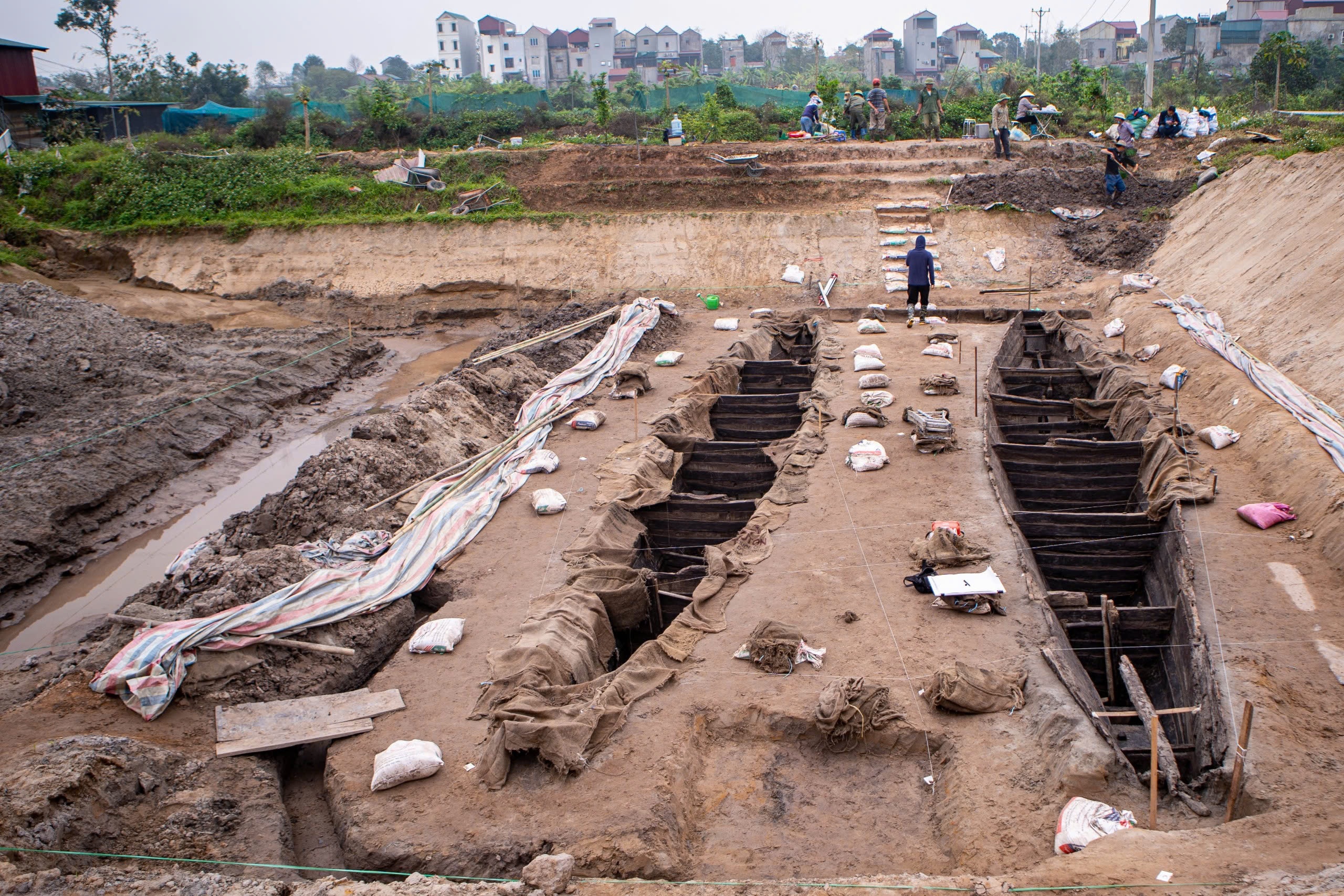 |
This is not the first time ancient ships and boats have been discovered in Vietnam. In January, while renovating land for fish farming, Mr. Nguyen Van Chien, 50 years old, in Ha Man ward (Thuan Thanh town, Bac Ninh ), now Song Lieu ward, discovered a pair of ancient boats at a depth of 2 meters. Photo: Chau Sa. |
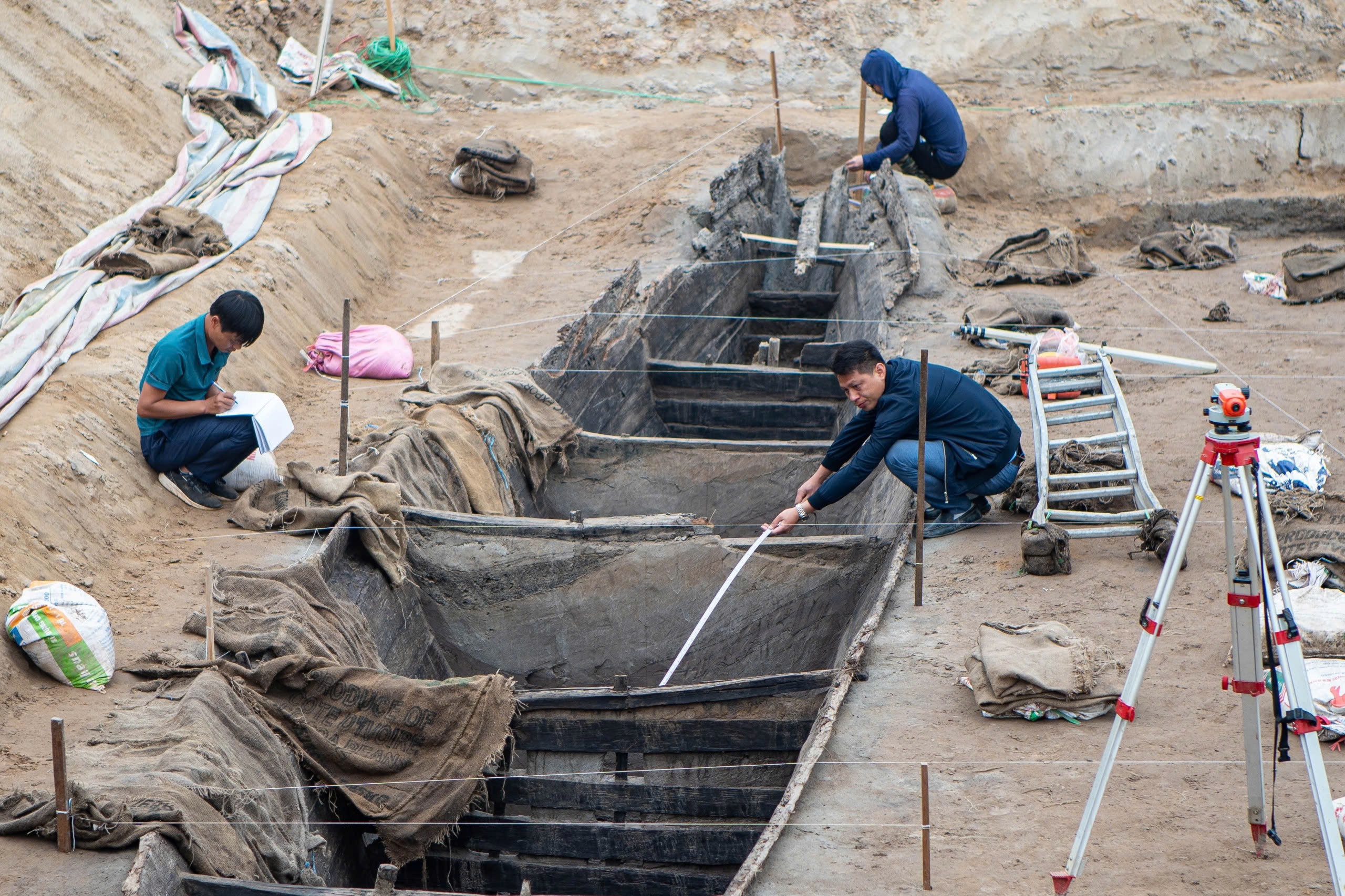 |
The boat was located on the ancient Dau River, a branch of the Duong River flowing close to the west of Luy Lau citadel. Later archaeological results showed that the heads of the two boat bodies were connected by a T-shaped plank, 6.45 m long, locked to the two bodies with sturdy wooden mortises and pegs. Photo: Chau Sa. |
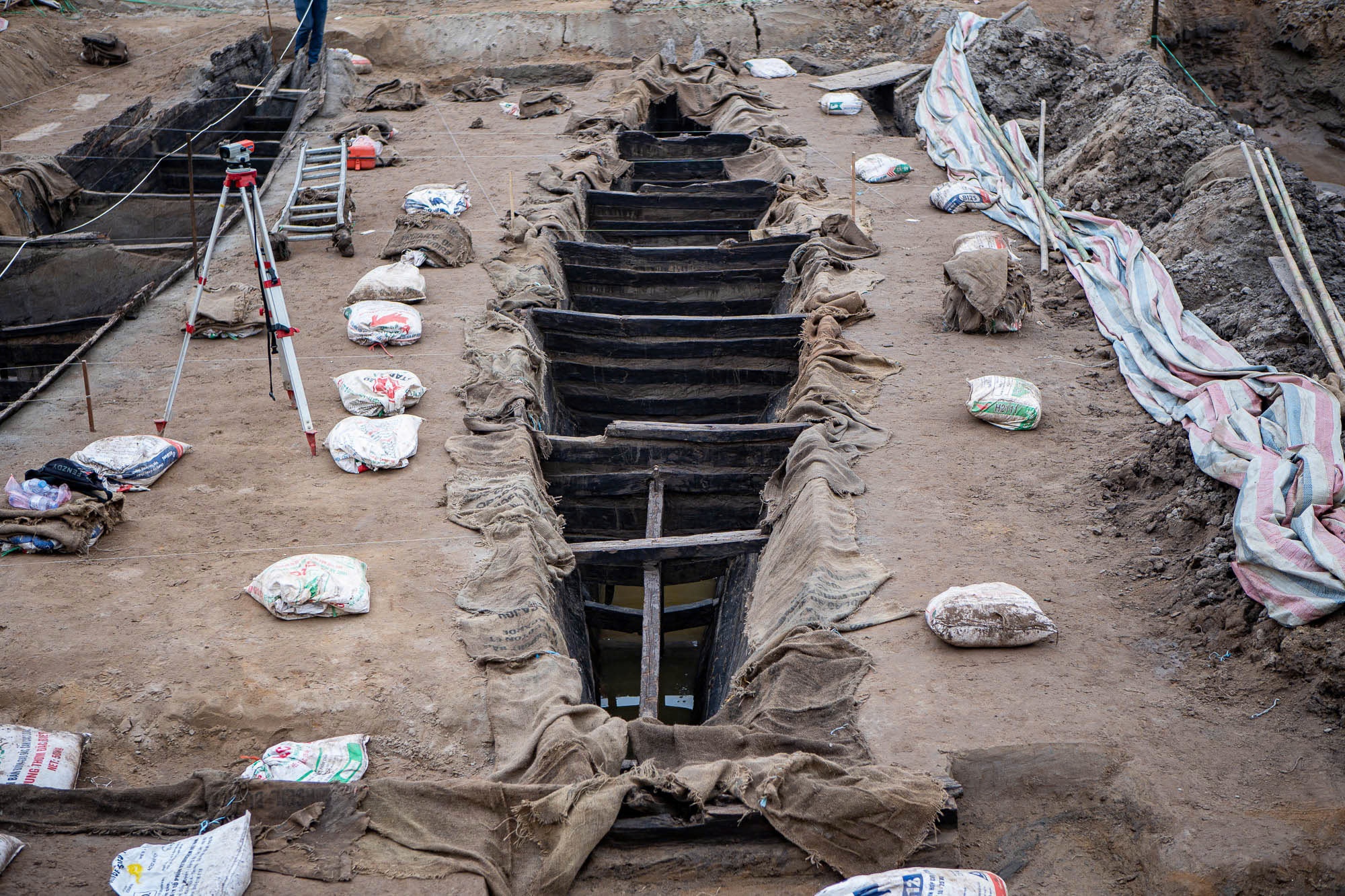 |
The stern of the boat is a plank with a hole and a wooden bar running through it. This could be the location for the rudder. The bottom of the boat is a dugout structure, with the widest part measuring 0.95 m. The hull is connected from the bottom to the top edge of the side by planks, with a total of 7-8 layers of planks, 22-34 cm wide, and an average thickness of 4.5 cm. Photo: Chau Sa. |
  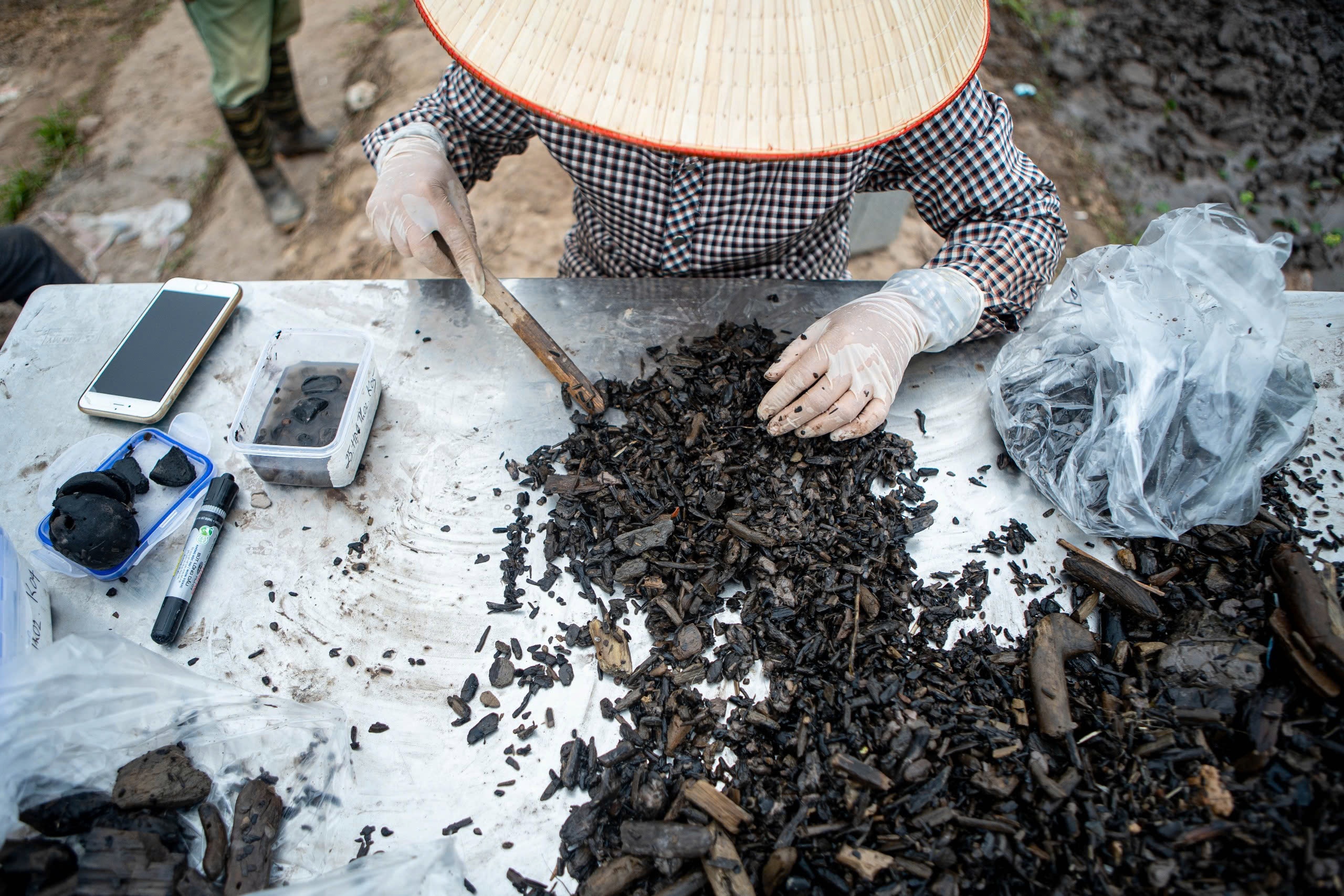  |
A group of workers watered the ancient boat to keep it moist, and sifted, classified, and washed artifacts collected inside the boat. Photo: Chau Sa. |
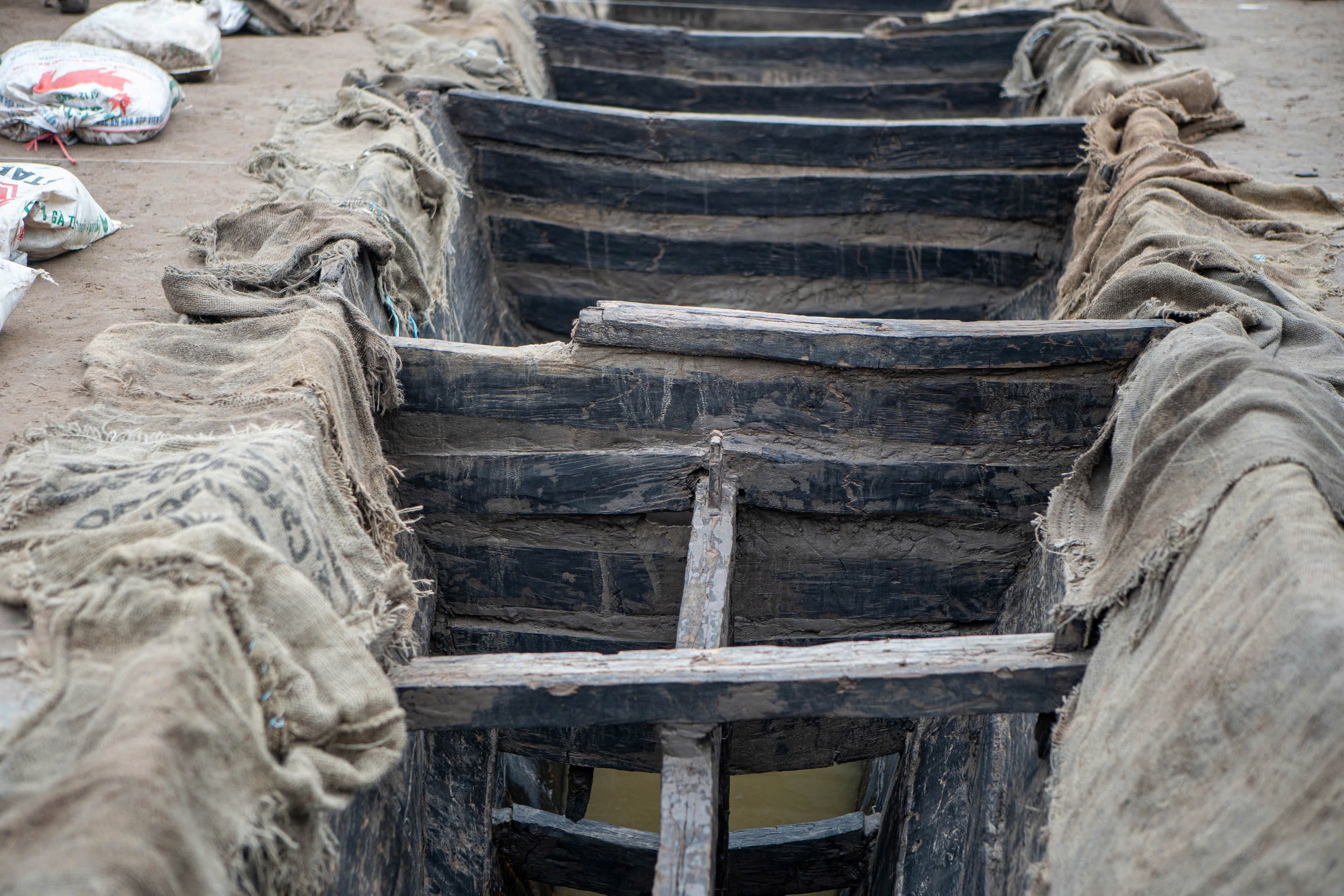 |
The Bac Ninh Department of Culture has invited experts from the Institute of Archaeology, the Vietnam Archaeological Association, the Institute of History, the National Museum of History, the Southeast Asian Prehistoric Research Center, and the Vietnam Shipbuilding Association to research the relics. According to many sources, the pair of ancient boats are 1,800-1,600 years old and are artifacts of the late Dong Son period. Photo: Chau Sa. |
 |
The Department of Culture, Sports and Tourism of Bac Ninh has protected the relic by using geotextile fabric to cover the entire site, setting up protective fences, and placing signs prohibiting trespassing. The locality said it will implement tourism and learning activities to increase people's understanding of this relic site. Photo: Chau Sa. |
Source: https://znews.vn/tau-thuyen-phat-lo-tu-long-dat-viet-nam-post1601717.html





![[Photo] Prime Minister Pham Minh Chinh receives Lao Minister of Labor and Welfare Phosay Sayasone](https://vphoto.vietnam.vn/thumb/1200x675/vietnam/resource/IMAGE/2025/11/11/1762872028311_dsc-2246-jpg.webp)




















































































![Dong Nai OCOP transition: [Article 3] Linking tourism with OCOP product consumption](https://vphoto.vietnam.vn/thumb/402x226/vietnam/resource/IMAGE/2025/11/10/1762739199309_1324-2740-7_n-162543_981.jpeg)






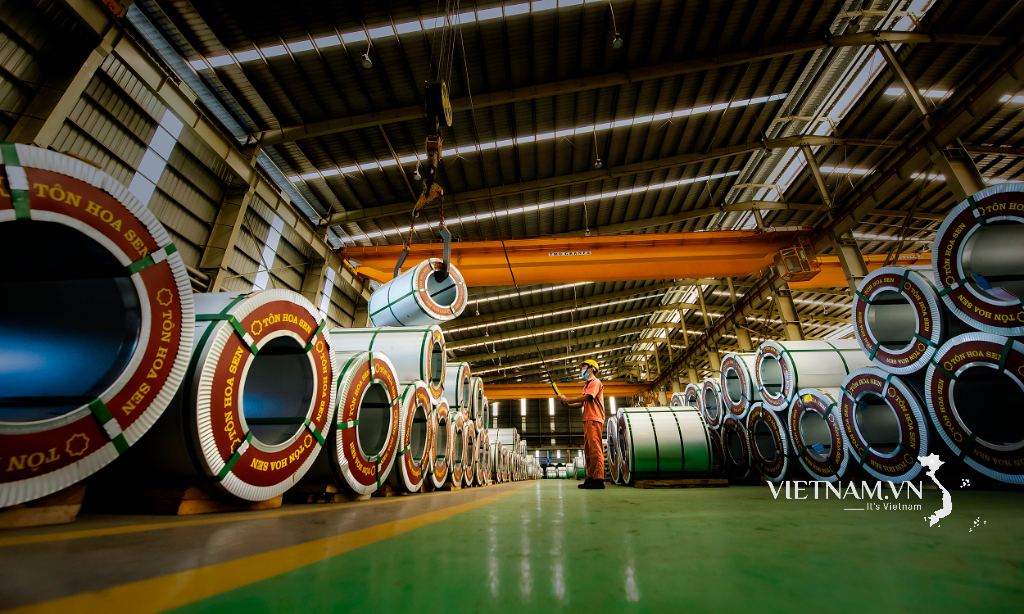

Comment (0)